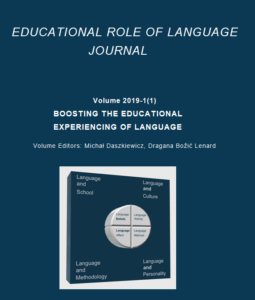Anna Lyngfelt 
University of Gothenburg, Sweden; https://orcid.org/0000-0003-3048-5603
DOI: https://doi.org/10.36534/erlj.2019.01.09
Bibliographic citation: (ISSN 2657-9774) Educational Role of Language Journal. Volume 2019-1(1). Boosting the Educational Experiencing of Language, pp. 93-104
Abstract
In the study presented digital text production in a multilingual classroom is discussed. This involves students aged 7-8, manifesting their literacy by making use of both their writing and reading competence. To be able to discuss the text production, Bakhtin’s theories about heteroglossia are crucial, allowing for both social and historical contexts of utterances (Bakhtin 1994). These theories are here intertwined with Bruner’s notion of human beings as constituted by ‘narratives’ (Bruner 2002). By the use of linguistic ethnography (Creese 2008) and text analysis based on sociosemiotics (Kress, van Leeuwen 2006), the following questions are discussed: How do multilingual students make use of digital tools for meaning making in their digital text productions, and in what sense could they by creating these texts be said to contribute to their own literacy development? Text productions from four students are analysed to illustrate how multivocal spaces are created, and how these ‘spaces’ can explain the students’ literacy development.
Keywords: meaning making, literacy processes, multilingualism, narratives, sociosemiotics
Go to full Volume 2019-1(1)
Go to Educational Role of Language Journal – main page
Go to International Association for the Educational Role of Language – main page